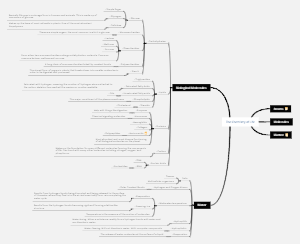MindMap Gallery Mind Map Of Diuretics
Mind Map Of Diuretics
This is a Mind Map Of Diuretics. Any substance that causes diuresis, or increased urine production, is referred to as a diuretic. This includes diuretics that are imposed. A diuretic tablet is sometimes known as a water tablet informally. Diuretics are divided into numerous categories. All diuretics increase the amount of water excreted from the body via the kidneys. There are various types of diuretics, each of which functions in a different way. An antidiuretic, such as vasopressin (antidiuretic hormone), is a substance that reduces the amount of water excreted in the urine. In EdrawMind community, you can get more templates of chemistry or other topics in study, work and life.
Edited at 2022-04-13 20:30:04Mind Map Of Diuretics
- Recommended to you
- Outline









